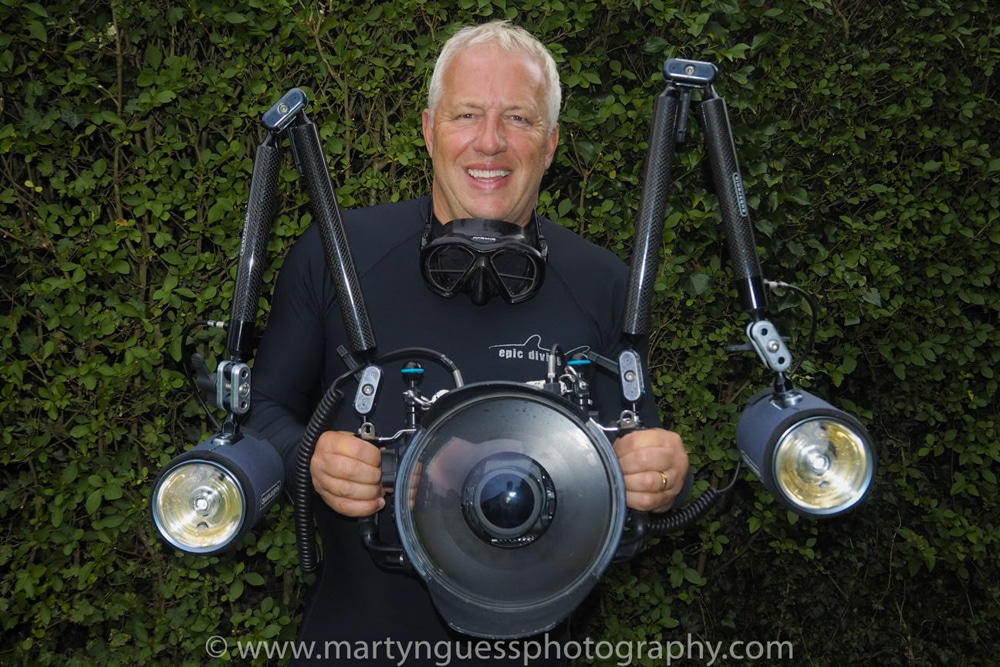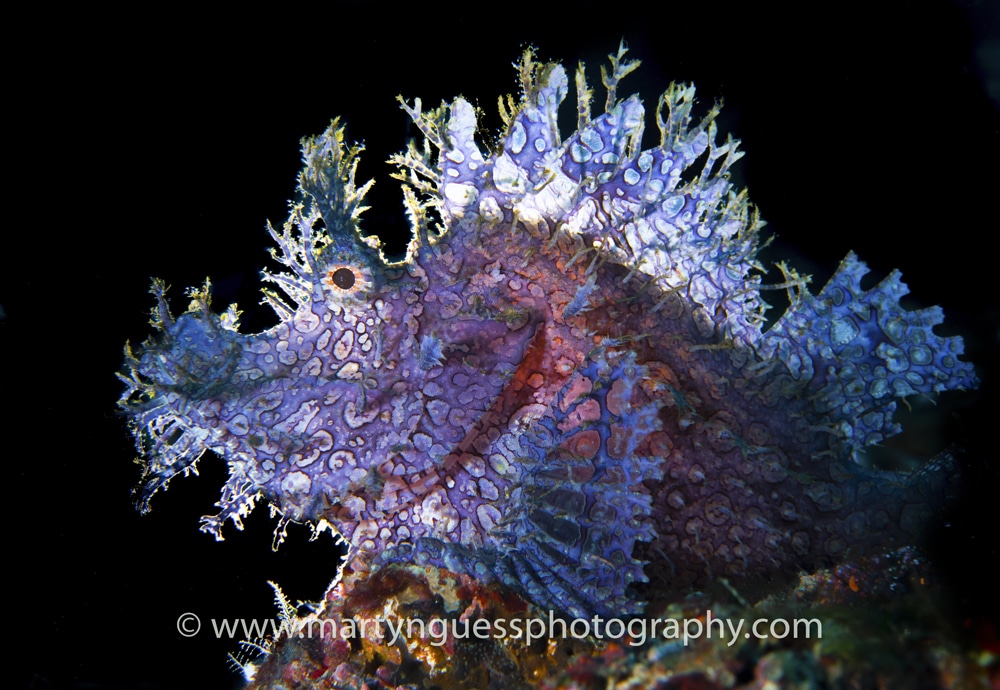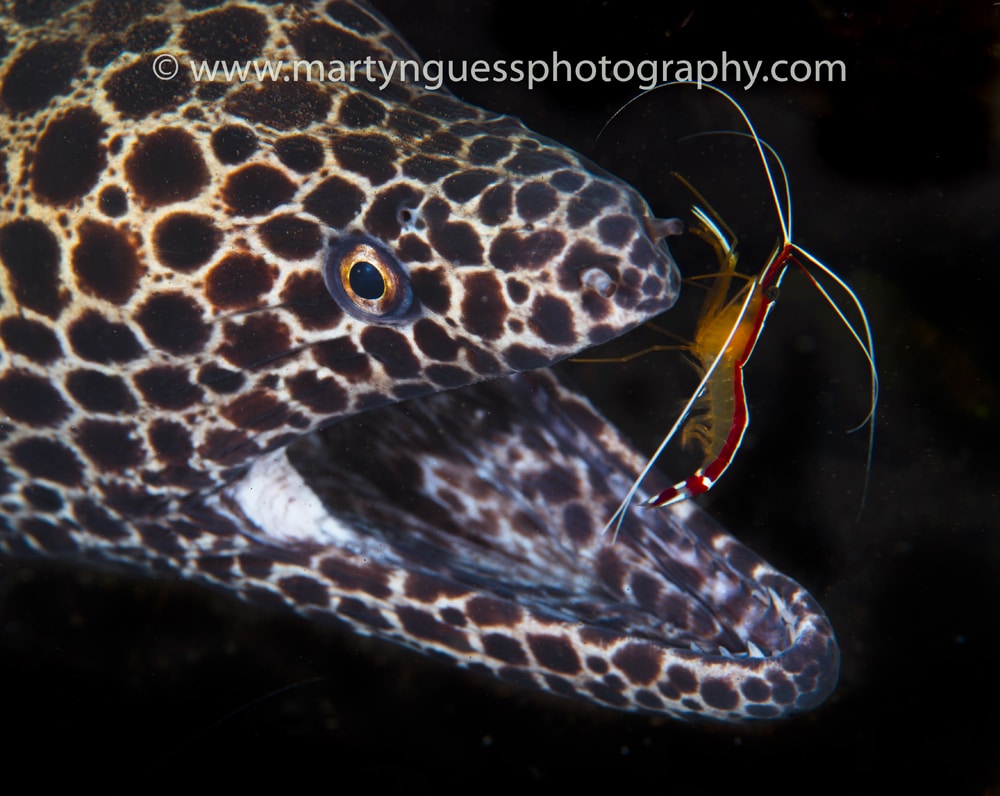Photo / Video News & Reviews
Scubaverse Underwater Photographer Interview: Martyn Guess
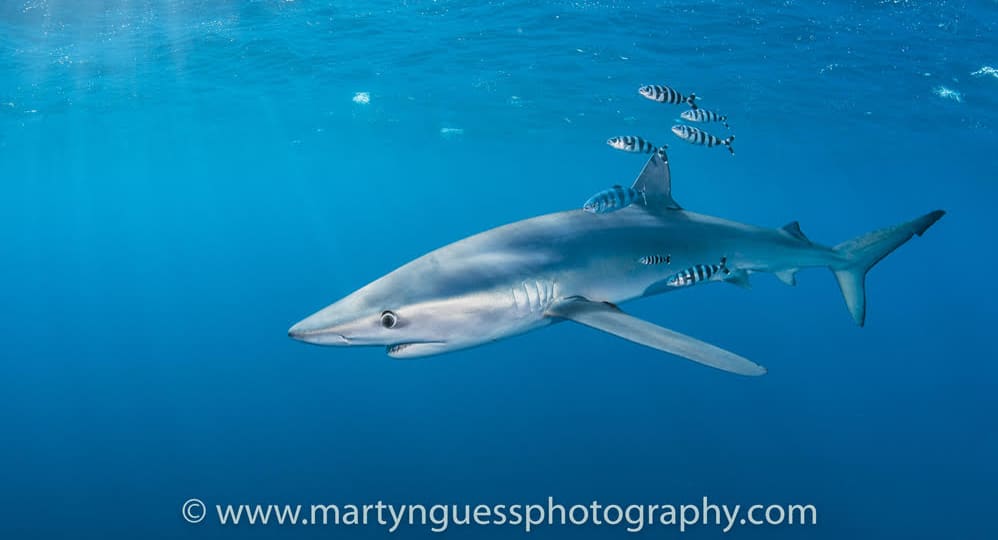
In an ongoing series, Scubaverse’s Underwater Photography Editors Nick and Caroline Robertson-Brown talk to underwater photographers from around the world that they admire. In this blog: Martyn Guess…
My diving career started in the late 1970’s when a family friend took me underwater in southern Spain. An interesting experience given that he managed to knock my mask off with his fins on the first dive! I was amazed by the colours and fish life and very keen to pursue the sport, although it wasn’t until quite a few years later that I went through the formal training process, together with my eldest son, and we both qualified on his 12th Birthday at Stoney Cove in the UK.
Since then, and over the last 22 years, I have dived all over the world and visited some amazing places and seen some wonderful things.
I have travelled extensively through Indonesia and the Philippines and have managed to build up an extensive portfolio of weird and wonderful creatures which I primarily post on Instagram.
I have had a fair amount of success with national and international competitions and I am now passing on some of my knowledge as I teach underwater photography, primarily by running photographic workshops with Scuba Travel, but I also do some one to one courses in the UK. We are going to the Azores in September with a group following a research trip there last summer and also Anilao, Philippines in May and Bali in October. I am keen to take photographers to the best places and some new destinations. I have recently become Chairman of Photosub – the Surrey based group of underwater photographers started by the late Len Deely; we have some very talented people in the club.
N&C: How did your underwater photography start?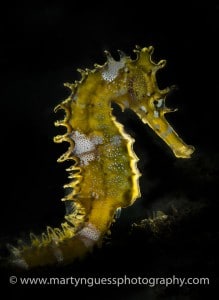
MG: A couple of years after I qualified in 1995 I went on holiday to Grand Cayman and found myself diving with Cathy Church, who with her husband Jim wrote the definitive book on the Nikonas V film camera for underwater use. I had been a keen land photographer since college days and was fascinated by some of the images in her shop, so it only took a day or two before I signed up for a course with her. I have to say I was immediately smitten and on the slippery slope!
When I got back home I went to see Alan James in Bristol and bought the same camera. For those that don’t know the Nikonas it was a great little camera but focus was achieved by guesswork and setting the F stop to an open aperture giving you infinity, or little prongs that stuck out from the lens for macro and close up use when a smaller aperture was selected. The idea being to get the subject between the prongs – no mean feat! You were also limited to 36 exposures with no real idea of how the images would look until the film had been processed. However, despite all of this I was hooked and used the Nikonas for quite a few years until digital cameras started to come onto the market.
N&C: What is your favourite u/w camera equipment (past & present) & why?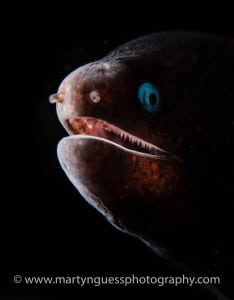
MG: I currently use a Nikon D5 which is a truly amazing camera. One of my favourite tools to use with the camera is the Retra LED Snoot which only allows a small amount of light from the strobe to hit the subject. You can isolate subjects from the background and where the subject is on a mucky bottom or distracting background this can be really useful in creating images that leap off the page. They are easier to use than people think and I teach the techniques on my workshops. It is always rewarding to see people reap the benefits of this type of lighting.
The Retra is so much better and easier to use than the old snoots that I had to make from plumbing parts, as the strobe modelling light shines through the snoot and is magnified so that it can be easily aimed. When I first started snoot lighting most of my images were totally black as it was pure guesswork where the light would land and often I had to nab my wife Sue to hold the bits of pipes over the subject!
N&C: What would be your advice to anyone new to underwater photography?
MG: I recommend going on a one to one course with an expert if you can afford it. This will cut out a lot of wasted time trying to work it out on your own. There is a lot to take on board such as equipment choice, lighting, angle of view, getting in the best position, camera settings etc and a course will put you on the right path. It’s exactly what I did years ago and my photography came on leaps and bounds as a result.
Get to know your camera and other equipment. Try and understand the settings and what they do. If this becomes second nature on land it will be so much easier underwater. Many people come to underwater photography without any knowledge of what the various camera settings really do and how they work together. Any good course will normally start with making sure that there is a good understanding of the basics of using the various settings together to achieve a good result.
Read the books written by the experts such as Alex Mustard or Martin Edge. Take your time and make sure you understand what you are reading. These guys take great images and in their books, they tell how they do it! Join a regional underwater photography club and BSOUP. There is a fountain of knowledge out there and in my experience members are very happy to help and offer advice to people starting out. All have regular meetings where there are useful presentations and the opportunity to enter competitions so that you can gauge how you are doing.
Consider going on a specific photography dive trip. There are quite a few of us leading these trips now. You will learn so much in the field and with help on hand above and under the water. I get students who can’t believe how much they learn in a week or two. They come home with portfolios of images that they never thought they would achieve.
Make sure that your diving skills are up to scratch. You are a diver first and a photographer second! Excellent buoyancy is a prerequisite if you are going to manoeuvre yourself into a good position to take a photograph without crashing into the reef or the bottom.
Above all else don’t get disheartened. Practice, Practice and Practice and the results will start to get better.
N&C: What, or who, has been your single biggest inspiration for your underwater photography?
MG: I would say without a doubt my friends Martin Edge and Alex Mustard. I have been on so many trips with both of them that sooner or later something had to rub off on me! I would look at their images and then determine that I was going to somehow take them myself. Nowadays, their inspiration and the many excellent photographers there are around the world drives me to try new techniques and to constantly perfect my image making.
N&C: What image are you most proud of and why?
MG: There is no specific image but I am proud of my recent back lit and snooted macro subjects such as Thorny Sea horses and Weedy Rhinopias. They are tough to light but the results can be spectacular. Also I have been into shark photography for the last couple of years and am very pleased with some dusk shots with Great Hammerheads and also open ocean Blue Sharks in the Azores. Sharks are amazing but you have to put yourself in the right position at the right time to get good images and be prepared to get very close!
N&C: Where is your favourite dive location, and is it for the photography?
MG: I would have to say Raja Ampat and definitely for photography. This is primarily due to the health of the corals and sea life. There is such a huge amount to photograph and if you are there when the bait fish shoals are around, the sight of them and all of the predators circling combined with the coral and the colours is simply breathtaking.
N&C: What are you views on marine life manipulation, moving subjects?
MG: Quite simply – dive and look, but don’t touch or harass anything! I teach on my workshops that if a subject is in the wrong place or facing the wrong way then move on. There will be another better opportunity as the dive progresses. From my experience people get blinkered by the guide spotting something maybe quite rare and in their eagerness to get a shot of this rare critter they snap away and don’t really think whether it is in a good position or whether the image they create will be a keeper. When they review their images in camera, and realise that perhaps the subject is not in a good position, some people can perhaps be tempted to try and get a better image by moving the critter. Maybe they have seen, as we all have, a guide (who is only seeking to please his client) move a subject and think this is quite acceptable behaviour. It might have been more prevalent in the past but is definitely a no-go area now. Sea life and the marine environment is so fragile that we all have to do what we can to help protect it and ensure that there is something left for future generations.
N&C: What do you look for when you are making your images?
MG: I am always trying to create an image which is not simply a record shot of the subject and often a different perspective, be it lighting, camera blur, lens bokeh or angle of view. There are so many great photographers out there that I am always striving to not only come up with something different but to perfect the shot as best I can. I am a stickler for the detail and getting the composition, lighting and focus right. I go through phases with a specific technique and will hammer this until I get what I want. The subject doesn’t need to be something exotic, it can be a common subject but maybe photographed in a different way, so I concentrate on looking for something which is in a good position and which will enable me to do what I want to do creatively.
N&C: What motivates you to take u/w photos?
MG: It’s my ability to record the underwater world that drives me. I am fascinated by the fact that new species are being discovered in the World’s oceans every year. I remember seeing a coffee table book years ago with a pygmy seahorse on the cover. I had never seen one and didn’t even know they existed. Without that photograph, I wouldn’t have been driven to find out where it was taken and to go there myself and then to be able to show other people what fascinating creatures live under the surface.
N&C: If you could photograph any one thing/place what or where would that be?
MG: I have quite a few things on my bucket list. Top of this is any of the great Whales. One day I hope to get to somewhere I can do that. I also want to photograph Great Whites!
To find out more about Martyn’s underwater photography trips with Scuba Travel click here.
News
Meet Insta360 Ace Pro 2: Redefining Action Cameras With Unrivaled 8K Image Quality & Smarter AI

Insta360 is thrilled to announce the latest addition to its Ace series, Insta360 Ace Pro 2. This groundbreaking wide-angle action camera delivers unparalleled image quality, smarter, easier capture powered by AI, upgraded audio, and an improved rugged design made for action at its most extreme.
Co-engineered with Leica, it delivers serious performance upgrades with the industry-first dual AI chip and state-of-the-art imaging courtesy of a new 1/1.3″ 8K sensor and Leica SUMMARIT lens with a 157º field of view. Creators can experience smoother videos with higher frame rates at 8K30fps and 4K60fps Active HDR, PureVideo for excellent low light performance, a bigger 2.5″ flip touchscreen and more.
The action camera utilizes Insta360’s advanced AI technology to offer a smarter experience from shooting to sharing. Innovative functions like the option to pause or cancel a recording, gesture and voice control, Auto Edit, and AI Highlights Assistant completely transform the experience for creators. With no more complex workflows, anyone can experience a simpler way to film and spend more time immersed in the moments they love.

Insta360 Ace Pro 2 significantly improves on its design, offering a more rugged, reliable action camera. Its waterproofing has increased to 39ft (12m), and it offers crystal-clear audio with an integrated Wind Guard and a removable Lens Guard to handle whatever you throw at it, providing full flexibility for action and sports enthusiasts.
“Our goal was to refine and enhance the groundbreaking features of the original Insta360 Ace Pro to deliver an unparalleled experience,” says JK Liu, founder of Insta360. “We are confident these upgrades establish a new industry standard. Not only do they bring significant advances in AI, they empower creators to capture what was always impossible with other action cameras, opening the door to unprecedented creative potential.”
Insta360 Ace Pro 2 is available to order today worldwide via Insta360.com, as well as trusted retailers and select authorized partners.
Unparalleled Image Quality, Day and Night
The Leica SUMMARIT lens immediately sets it apart from competitors with its state-of-the-art image quality. Combined with an upgraded 1/1.3″ 8K sensor offering 13.5 stops of dynamic range, Insta360 Ace Pro 2 delivers simply breathtaking visuals in situations other action cameras simply can’t handle.
Further contributing to its image quality and performance is the industry-leading dual-chip design. Insta360 Ace Pro 2 is the first action camera with a dedicated Pro Imaging Chip that handles image processing and noise reduction, while a separate 5nm AI Chip handles further image processing and overall camera performance, providing a smooth, seamless user experience. The dual chip also enables more shooting modes and higher specifications, such as 8K30fps video, 4K60fps Active HDR (High Dynamic Range), and upgraded PureVideo. Even in fast-moving motion and high-intensity action, creators can enjoy smooth, sharp videos thanks to the higher frame rates or slow it all the way down with crisp 4K120fps slow motion.
A complex, custom-trained AI neural network underpins PureVideo, a specialized shooting mode that drastically reduces noise and enhances details in real time for cleaner, brighter images, even in extreme low light. Whether it’s twilight strolls or evening rides, creators can record what they never could before. For the daytime, upgraded 4K60fps Active HDR brings out all the details in intense highlights and shadows for more vibrant footage. Meanwhile, a wider 157° lens FOV captures more of the surroundings, perfect for vlogging or when the scenery really matters.
Exclusive Leica-engineered color profiles infuse footage with their signature aesthetic, adding a touch of elegance to every shot. Insta360’s devotion to color accuracy is seen elsewhere with Insta360 Ace Pro 2’s ability to retain rich and precise colors, even underwater.
Ready for Action Anytime, Anywhere
The upgraded design proves to be even more rugged, ready for when you ramp up the action. Waterproofing has increased to 39 feet (12 meters) or 197 feet (60 meters) with the Dive Case, and it handles temperatures as low as -4ºF (-20ºC) with ease, perfect for winter sports and extreme climates.
The new, removable Lens Guard provides greater all-around protection, meaning creators can feel confident to push the limits further and capture the impossible, knowing their action cam is up to the challenge.
An all-new Wind Guard keeps wind and noise at a minimum during those peak moments, ready to snap on and off as you need. With refreshed audio algorithms bringing professional-grade clarity to your content, you can immerse your viewers like never before. What’s more, the magnetic mounting system lets you seamlessly switch between accessories. Less time spent unscrewing and screwing your camera and mounts, more time in the moment.
Insta360’s leading FlowState Stabilization technology ensures videos remain incredibly smooth no matter what, while 360º Horizon Lock, now applied automatically in-camera, keeps everything perfectly level. Prioritizing performance and convenience, Insta360 Ace Pro 2 sports a bigger 1800mAh battery and a new Endurance Mode that offers a 50% longer runtime at 4K30fps than Insta360 Ace Pro. Fast charging powers the battery to 80% in 18 minutes or 100% in 47 minutes, so you can get back to the action quicker.
Insta360 has expanded its compatibility with several top third-party sports accessories, allowing action and sports enthusiasts to add a new level of detail. For data-rich videos, overlay real-time stats from third-party sports brands, including Garmin, Apple, COROS, and more. Alternatively, users can add stats from their phone directly in the Insta360 app without any extra gear or use the GPS Preview Remote for easy live preview, remote control, and real-time GPS data. For moto vloggers, pair Insta360 Ace Pro 2 with your motorcycle helmet headset from Sena, Cardo, and more for clear dual-track audio and hands-free control every ride.
Made for those who demand the highest standard of action capture, Insta360 Ace Pro 2 offers the perfect combination of durability and high-quality performance to capture life’s thrills with confidence.

Smarter, Easier Capture & Editing
Insta360 Ace Pro’s flip touchscreen proved an essential and convenient tool for creators and has been further upgraded to 2.5 inches. With a 70% increase in pixel density, a 6% increase in brightness and a 100% increase in flip durability, it allows for perfect framing and easier preview for vlogging, selfies, and difficult angles, all while remaining visible under bright sunlight. Instead of guessing if your shot looks perfect, you can shoot with confidence, knowing it is.
Internally, Insta360 Ace Pro 2 offers innovative solutions to problems that have hindered action enthusiasts for years:
- 4K Clarity Zoom – Want a close-up but the image quality becomes too grainy? Zoom in and out 2x without losing quality.
- Pre-Recording – Never miss a moment with up to 120 seconds of footage saved before you even hit record.
- Gesture & Voice Control – Use quick hand signals or verbal commands to control the camera, such as start/stop recording or take a photo, ideal if it’s mounted out of reach.
- Pause/Resume Recording – Got time between shots? Hit pause and continue recording when you need to keep everything in one continuous file for easier file management and editing.
- Timecode – Seamlessly synchronizes multiple cameras for an efficient editing workflow.
Insta360’s revolutionary AI features demonstrate a commitment to making shooting and editing as accessible as possible. Anyone, regardless of their skill level, will be amazed at what they can create. For those who aren’t confident editing, AI Highlights Assistant automatically finds the best moments from a video and delivers the highlights for review, all in-camera. Creators can merge every thrilling moment into one incredible recap or choose the ones their favorites and delete any unwanted clips to save storage.
The Assistant also helps craft your next reel from your adventures and pushes it directly to your smartphone via the Insta360 app. Look back on all your Memories and share those unforgettable moments in seconds.
Acting as a full editing suite in your pocket, the Insta360 mobile app fully embraces the game-changing possibilities of AI with advanced Auto Editing, one-tap templates and creative Shot Lab effects. Instead of spending hours learning complex tools and editing workflows, AI does it all for you, bringing your clips to life with dynamic cuts and transitions. Creators can even achieve the infamous Invisible Selfie Stick effect with the AI Selfie Stick Eraser in the app for third-person views. Looking for a real twist? AI Warp uses preset or custom keywords to bring your wildest ideas to life.
Available Now
Insta360 Ace Pro 2 is available to purchase today worldwide via Insta360.com and select retailers. The Standard Bundle retails for US$399.99 and includes a Wind Guard, Battery, Standard Mount, Mic Cap, and USB-C Cable. The dual battery bundle includes the same accessories and two batteries for US$419.99.
News
Introducing the Nauticam Super Macro Converter 3

The SMC-3
Nauticam is proud to introduce the SMC-3, the latest evolution in our line of water contact optics! Designed as a renewed version of the acclaimed SMC-1, the SMC-3 boasts a lightweight build—now only one-third the weight of its predecessor—without compromising on optical performance.
SMC-3 Specifications
| Dimensions | OD 70mm x H 32mm |
| Weight in Air | 307g |
| Weight in Water | 215g |
| Max Magnification (*1) | 2.4x (lens dependent) |
| Working Distance (*1) | 51-103mm |
| Lens Construction | 3 elements in 2 groups |
| Lens Coatings | Anti-reflection Coating |
| Mount Thread Diameter | M67 |
| Depth Rating |
100mm |

Tested with Nikon AF-S VR Micro-Nikkor 105mm f/2.8G IF-ED
Key Features
- Ultra-Lightweight Design: Weighing in at just one-third of the SMC-1, the SMC-3 offers unparalleled portability for on-the-go use.
- Superior Optical Performance: Enjoy the same exceptional clarity and precision you’ve come to expect from the SMC series.
- Increased Working Distance: The redesigned lens allows for a greater working distance, meaning it’s easier to use and provides enhanced versatility.
- Premium Materials: Crafted with advanced materials to enhance durability while minimizing weight.
- Cost-Effective: Slightly more affordable than the discontinued SMC-1, the SMC-3 delivers exceptional value.
Uncompromised Optical Quality
The Super Macro Converter 3 is constructed from lenses that are precision crafted of specially formulated low dispersion optical grade glass, ground to the most demanding standards. These exceptional measures, enhanced by broadband anti-refective coatings effectively reduce common optical issues such as chromatic aberrations, coma, spherical aberration, and field deformation associated with underwater macro photography using traditional magnifying lenses. These optics are assembled in a rugged hard anodized aluminum housing, and nitrogen purged during assembly to eliminate fogging.
Stunning Magnification
When combined with a full frame camera and a 100mm or 105mm macro lens, the device converts the optical system to provide a maximum of 2.4X magnification factor. In other words, a subject area of 15.6mm X 10.4mm will fill the whole frame of a 36mm X 24mm sensor.
Improved Sharpness and Contrast
As the Super Macro Converter 3 is optimized explicitly for using together with a macro lens underwater, images captured exhibit exceptional sharpness compared with conventional magnification lenses. Thanks to the broadband multi-layer anti-reflection coating on each surface of the lenses, images also exhibit higher contrast.
Superb Light Transmission
All the lens elements installed inside the SMC are optically optimized to appropriate diameters so as to provide maximum light transmission. The SMC doesn’t suffer from vignette issues under even the most extreme conditions. The broad band multi-layer anti-reflection coating on all surfaces also greatly improves light transmission.
Optimized for Autofocus
By utilizing a specially developed algorithm in the optimization process, the SMC renders superior image quality over the full focusing range of the camera lens (which becomes ~50 to ~100 mm in front of the SMC). Also benefitting from the high brightness and contrast of the image, the autofocus system of the camera usually works acceptably well within this range.

Ample Working Distance
Even at the maximum 2.3X magnification, there is still more than 50mm of working distance between the front element and the subject with 100/105mm macro lenses. This working distance is crucial when capturing behavior with skittish subjects.
Resolution
High resolution was a primary design goal of the SMC project. This has been achieved using computer aided optimization and high grade optical glasses with unique refractive and dispersion properties. Images taken with this new system exhibit very high resolution and quality. Results have exceeded expectations, and these images rival the quality of the macro lens in air.
Smooth Bokeh
The Converter retains the optical properties of the macro lens for the whole system underwater, resulting in a blurred (out of focus) background that has a pleasing smoothness and creamy look, without the normal purple and green fringing.
Avoiding Diffraction
Due to the overall superior optical performance of the SMC-3 it is possible to shoot larger apertures with excellent image quality. This avoids reaching the diffraction limit of high resolution sensors, and allows selective focus effects with narrow depth of field in super macro images.
For more information about the Nauticam Super Macro Converter 3, which ships in November, click here.
-

 News1 month ago
News1 month agoIconic SS United States to become the World’s Largest Artificial Reef
-

 Blogs3 months ago
Blogs3 months agoNovoScuba’s Game-Changing Approach for Dive Store Owners: WE PAY YOU!
-

 News2 months ago
News2 months agoBook Review – 52 Assignments: Underwater Photography
-

 Marine Life & Conservation3 months ago
Marine Life & Conservation3 months agoBook Review: Sharkpedia
-

 Gear News2 months ago
Gear News2 months agoDYNAMICNORD – New German diving brand enters the British market
-

 News2 months ago
News2 months agoExploring Cenote El Pit: A Diver’s Dream
-

 Gear News2 months ago
Gear News2 months agoTry BARE drysuits (and maybe even win one!) this Friday with Sea & Sea at North West Dive Fest
-

 News2 months ago
News2 months agoComing Soon – 52 Assignments


